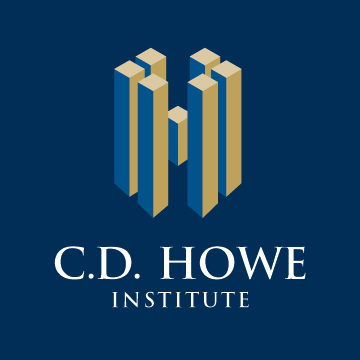Home / Publications / Intelligence Memos / Peter Howitt’s Work Goes Well Beyond Economic Growth Theory
- Intelligence Memos
- |
Peter Howitt’s Work Goes Well Beyond Economic Growth Theory
Summary:
| Citation | Steve Ambler. 2025. "Peter Howitt’s Work Goes Well Beyond Economic Growth Theory." Intelligence Memos. Toronto: C.D. Howe Institute. |
| Page Title: | Peter Howitt’s Work Goes Well Beyond Economic Growth Theory – C.D. Howe Institute |
| Article Title: | Peter Howitt’s Work Goes Well Beyond Economic Growth Theory |
| URL: | https://cdhowe.org/publication/peter-howitts-work-goes-well-beyond-economic-growth-theory/ |
| Published Date: | October 23, 2025 |
| Accessed Date: | October 23, 2025 |
Outline
Outline
Related Topics
Files
From: Steve Ambler
To: Inflation Watchers
Date: October 23, 2025
Re: Peter Howitt’s Work Goes Well Beyond Economic Growth Theory
Earlier this month, Canadian Peter Howitt – former Western University professor, former Fellow-in-Residence and current International Fellow at the C.D. Howe Institute – received the Nobel Prize in economics alongside Philippe Aghion and Joel Mokyr for their work on the theory of economic growth.
As the Institute’s Colin Busby recently summarized, Peter’s research has deepened our understanding of the subject, especially in publications published by the Institute in 2007 and 2013. Further, he has illuminated hard truths about economic growth. And Peter’s contributions go well beyond economic growth theory – most notably, the C.D. Howe Institute’s work on Canadian monetary policy.
Peter wrote one of the Institute’s early monographs on Canadian monetary policy in 1986, which have become a C.D. Howe Institute tradition and mainstay. In it, he discussed the Bank of Canada’s failed experiment in gradualism (reducing inflation by gradually reducing the rate of growth of the money supply) and its transition to focusing on stabilizing a trade-weighted average exchange rate.
He proposed a strategy of adaptive monetary control: “The supply of money, broadly defined, rarely should be permitted to deviate for a period longer than a few months outside a narrow band around a target that grows at approximately the same rate as capacity output.” He has been encouraging the Bank of Canada for years to pay at least some attention to monetary aggregates, and a reread of Peter’s monograph would be well advised. Indeed, along with my co-author, Jeremy Kronick, we showed that the surge in money growth in 2020 was a good predictor of the post-COVID surge in inflation.
Throughout his career, Peter has criticized the approach of much of modern macroeconomic theory, which takes equilibrium and/or adjustment towards equilibrium as automatic. Instead, he has consistently scratched underneath the surface of the adjustment process to look at the incentives of individuals to adjust wages and prices and the mechanisms of those adjustments. This included the process of buyers and sellers finding each other and agreeing on prices. He also examined ways in which the adjustment process could get stuck or go wrong.
In one recent article, he summarized why the mainstream assumption of continual equilibrium models is flawed: (1) it assumes away coordination problems; (2) it hides possible instabilities; (3) it makes money look unimportant; and (4) it makes inflation look trivial. His 1990 C.D. Howe Institute chapter outlined the many ways inflation is costly and which are often omitted from equilibrium models.
Around the time that the Bank of Canada and many other central banks adopted inflation targeting as their monetary policy framework, Peter published a seminal article on the use of a short-term nominal interest rate as the main instrument of monetary policy. Pegging the nominal interest rate can potentially lead to macroeconomic instability. With a constant interest rate, an unexpected increase in inflation, which leads expected inflation to increase, will lower real interest rates, boost aggregate demand, and cause inflation to increase even more. To prevent this, the central bank must raise its interest rate more than 1-for-1 in response to increases in inflation.
Because this idea is most often understood in the context of the so-called Taylor rule, an equation which describes how a central bank’s policy rate should respond to changes in inflation and the output gap, it has come to be known as the Taylor principle. As noted by macroeconomist Josh Hendrickson, there is a strong claim that it should actually be called the Howitt principle.
More recently, Peter has worked with co-authors on so-called agent-based models. Fellow economist Sylvie Rivot calls Peter one of the pioneers of this approach. In a 2008 paper, Peter notes “instead of modelling the system as if everyone’s actions and beliefs were coordinated in advance with everyone else’s, as in rational expectations theory, the approach assumes simple behavioral rules and allows a coordinated equilibrium to be a possibly emergent property of the system itself.”
In a 2016 paper with Quamrul Ashraf and Boris Gershman, they show that inflation can worsen macroeconomic performance by disrupting the mechanism of exchange in a decentralized market economy. Trend inflation above 3 percent has a substantial negative effect on macroeconomic performance, while reducing inflation below 3 percent has very small benefits.
Whether or not Peter has a rule or a principle that carries his name, his work will continue to influence the evolution of macroeconomic theory for many years to come.
Steve Ambler, a professor of economics at Université du Québec à Montréal, is a Fellow-in-Residence with the C.D. Howe Institute and serves as the Institute’s David Dodge Chair in Monetary Policy.
To send a comment or leave feedback, email us at blog@cdhowe.org.
The views expressed here are those of the author. The C.D. Howe Institute does not take corporate positions on policy matters.
Want more insights like this? Subscribe to our newsletter for the latest research and expert commentary.
Related Publications
- Research
- Intelligence Memos

